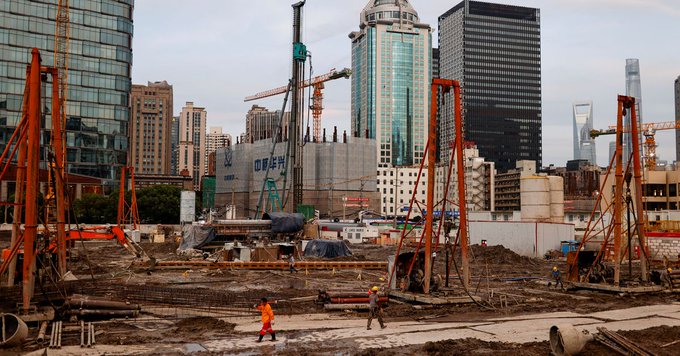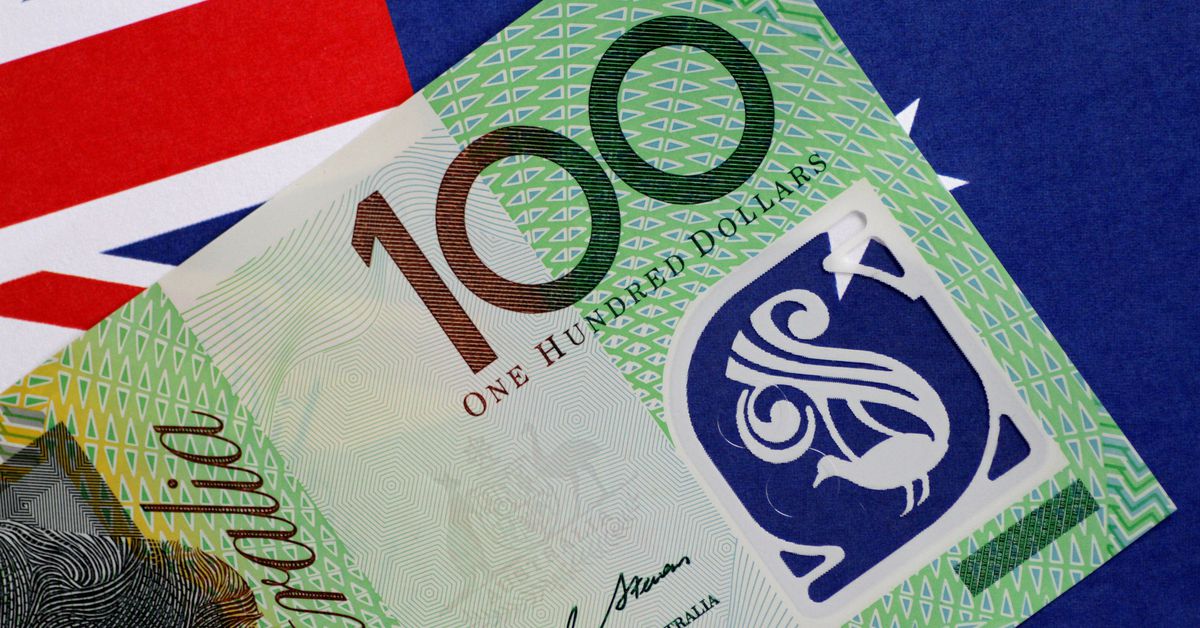Australian shares marked a third consecutive weekly decline as property developer Evergrande’s debt crisis continued to capture attention worldwide and spark concerns of a fallout in China’s financial systems and other markets.
Evergrande, China’s second-biggest property developer, missed an interest payment on Thursday and has entered a 30 day grace period. World markets have been on tenterhooks all week on debt payment obligations for Evergrande, crumbling under $400 billion mountain of debt.
Investors are concerned that a failure to pay their debt by Evergrande will result in a slowdown in China which in turn will impact commodity prices. As such Australian miners, who are dependent on Chinese demand for raw materials were heavily sold down with BHP, Rio and FMG leading the losses.
Concern over whether distress could spill into the broader economy continues to hover over the markets as this week opens. In a clear sign of worsening liquidity crisis in other parts of Evergrande’s business, the property developer has warned that its electric car unit faced an uncertain future unless it got a swift injection of cash.

Last week on Monday alone, Australia suffered its biggest single-day loss since February. The markets, however, recovered most of the losses once Evergrande committed to making bond payments on Thursday. However, the markets again got jittery once the news came on Friday that the property giant has missed its payments on Thursday.
With supply chains under intense pressure, labour markets not in the healthiest condition and the virus still laying waste to some economies the Evergrande situation could act as a catalyst that could damage market optimism.
The construction sector in China accounts directly for almost half of all steel consumption. There will be some spillover effects on commodity prices going forwards and the iron miners in Australia such as BHP and Rio may continue to suffer in short term.

We also think a weakness in the property sector will spill over to other related sectors such as furniture and electronics. A lower iron price is also expected to leave a big dent in the Australian economy and cause significant pain for not only the Australian miners but also government budgets.
This week Australia will enter into the final quarter of the year with a heap of data that will provide information on the damage from continuing lockdowns in our two largest states. Retail sales are expected to show a decline, however, it is Core Logic’s home value index that will be most awaited by traders in Australia. The data is expected to show the impact of ongoing lockdowns on property prices.
In regards to gold, US Federal Reserve’s plans on reducing stimulus to the US economy ensured the bullion recorded its third straight week of declines.
Fed Chairman Jerome Powell last week said that the tapering process could conclude around the middle of next year, as long as recovery remains on track. The US central bank policy statement last week also suggested it may lift interest rates earlier than expected. Thus pushing the yellow metal down.

Gold is often seen as a hedge against higher inflation, however, a Fed rate hike increases the opportunity cost for holding gold, which pays no interest. Gold could remain under pressure in the near short term with the US Dollar index also rising against a basket of other currencies.
Oil climbed for a fourth consecutive week to settle at a nearly 3-year high. Oil continued to soar high as data from the US revealed a drop in US crude inventories to their lowest levels since 2018, along with strong refinery demand, as crude production continued to see a slow recovery in the US following Hurricane Ida which landed on the Louisiana coast on 29th August.
With another storm, Sam, expected to become a major hurricane in the Atlantic the long term track for oil is still uncertain at this point. As such with the uncertainty of storms in the long term we expect the energy market to maintain its strength until more clarity is achieved. Several forecasts also call for a much colder winter in several areas of Europe and the North American continent which could further lift energy demand.

The Australian Dollar also declined for the week as Evergrande’s failure to pay its bond interest weighed on the local currency. According to ING, Australian currency is the most Chinese dependant currency in the G10 and hence is most exposed for any spillover from a potential Evergrande default.
A collapse in the real estate market in China would further raise demand concerns in the iron ore market, generating another sell-off in commodity’s prices and the Australian dollar.
Technically speaking the latest price action on the daily chart suggest that a bearish engulfing candle may be forming for AUD/USD pair. We would need a close below 0.7245 to confirm its validity. If that is to happen the price is expected to go down to first support at 20 September low of 0.7219. A decisive break of this support could see the Australian dollar fall further to a 2021 low of 0.7105.

The Relative Strength Index also continues to point lower thus supporting the downtrend.
In regards to the Indian Rupee, with market sentiment dwindling amid anxiety over Evergrande, Indian Rupee too declined against the greenback.
The comments from China’s National Development and Reform Commission suggesting power to control rising raw materials also dented trader confidence in risk currencies such as the Indian rupee.
At home in India, rising coronavirus cases where the official numbers were back above 31,000 cases a day and an increase in Covid led deaths also contributed to Rupee’s sluggish performance.

In the world of Cryptocurrencies, the week gone by turned into a complete rollercoaster following yet more fear, uncertainty and doubt coming from China.
The week before last week Bitcoin consolidated by 3% and was sitting close to $49,000. Then on Monday as fears from Evergrande fears started to take shape Bitcoin started plummeting and fell as low as USD 40,000 on Wednesday.
The bulls then started recovery for the digital currency to pull it back to $45,000 before China announced more regulatory efforts to crack on BTC mining to send it back to $40,000. At the time of writing this report, the cryptocurrency recovered back to about $42K.
This was the fate of almost all altcoins as well with most of them charting notable weekly losses. Etherium was down about 19%, Cardano about 7%, Ripple recorded a fall of 15% and so forth.

It is interesting to see how China clamping on cryptocurrency has an impact on the currency market compared to other news. Previously too China has made efforts to clamp down on cryptocurrencies and every time it does the price of digital coins go down. Whereas other news such as Twitter announced this week that users can now send tips over the social media using BTC, which was a huge case for cryptocurrencies, does not have much impact.
In agricultural products, it was a mixed week. Wheat recorded its second consecutive weekly gains driven by concerns about tighter global supplies due to adverse weather conditions. Corn declined on US harvest pressure and soybeans remained flat for the week.
Abnormal weather conditions in Russia, Canada and European Union raised concerns about grain supplies as wheat production takes a hit.
Moving forward global grain supplies stemming from adverse weather may continue to push grain prices higher.
Author: Ateev Dang is a trader and trading coach by profession. He runs a business called Glow trades Pty Ltd where he teaches anyone interested in starting their trading journey on how to trade. He can be contacted at adang@glowtrades.com.au.
Disclaimer:
The writers’ opinions in the above article are their own and do not constitute any financial advice whatsoever. Nothing published by The Australia Today constitutes an investment recommendation, nor should any data or content publication be relied upon for providing any investment activities.
We strongly recommend that you perform your independent research and/or speak with a financial advisor or qualified investment professional before making any financial decisions.




